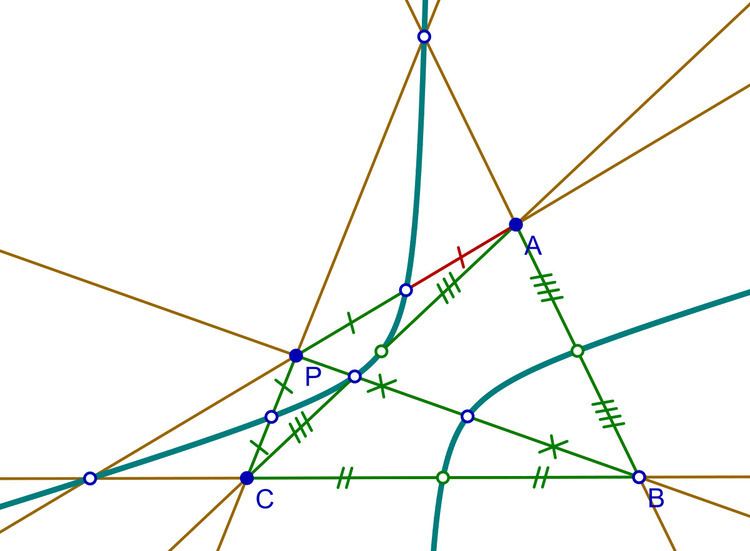 | ||
In geometry, the nine-point conic of a complete quadrangle is a conic that passes through the three diagonal points and the six midpoints of sides of the complete quadrangle.
The nine-point conic was described by Maxime Bôcher in 1892. The better-known nine-point circle is an instance of Bôcher's conic. The nine-point hyperbola is another instance.
Bôcher used the four points of the complete quadrangle as three vertices of a triangle with one independent point:
Given a triangle ABC and a point P in its plane, a conic can be drawn through the following nine points:the midpoints of the sides of ABC,the midpoints of the lines joining P to the vertices, andthe points where these last named lines cut the sides of the triangle.The conic is an ellipse if P lies in the interior of ABC or in one of the regions of the plane separated from the interior by two sides of the triangle, otherwise the conic is a hyperbola. Bôcher notes that when P is the orthocenter, one obtains the nine-point circle, and when P is on the circumcircle of ABC, then the conic is an equilateral hyperbola.
In 1912 Maud Minthorn showed that the nine-point conic is the locus of the center of a conic through four given points.
